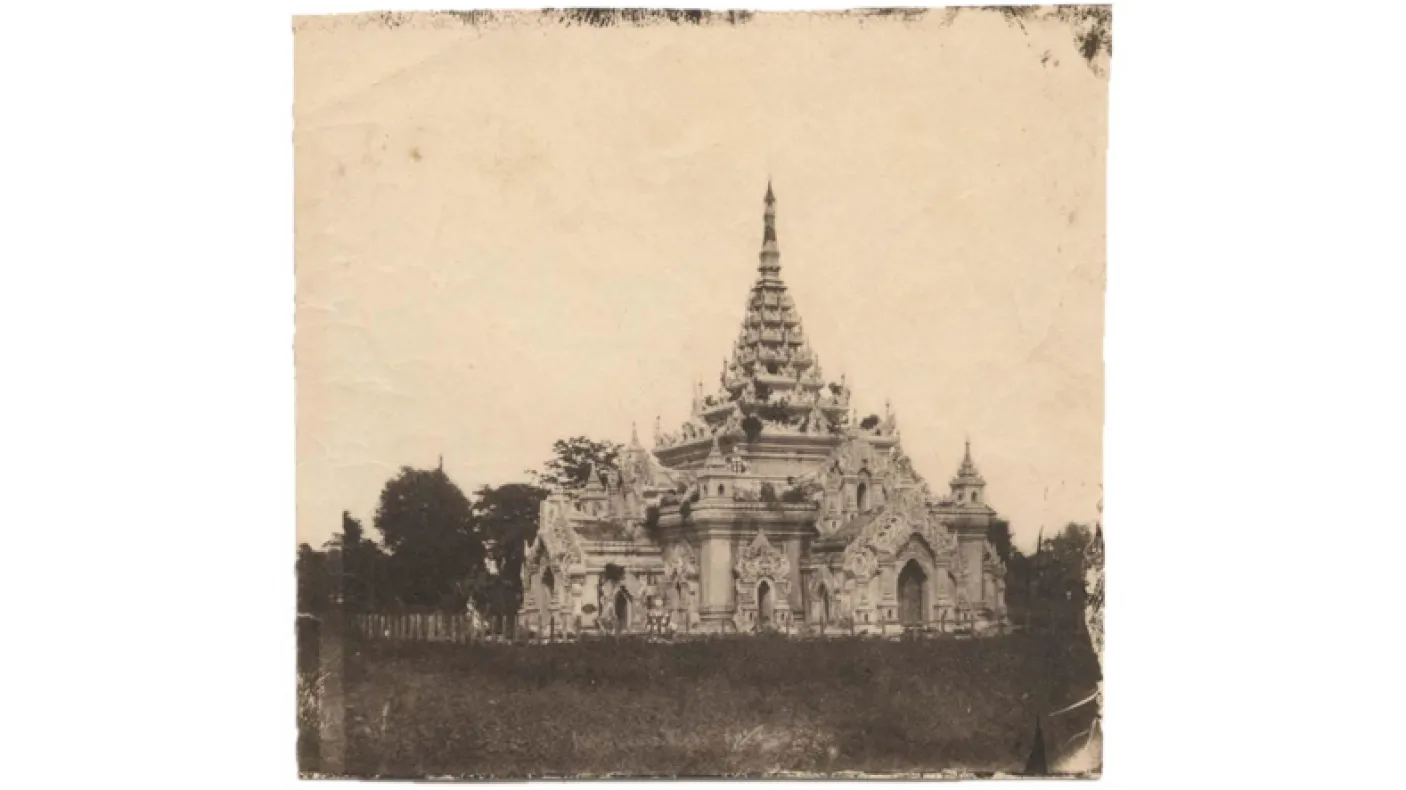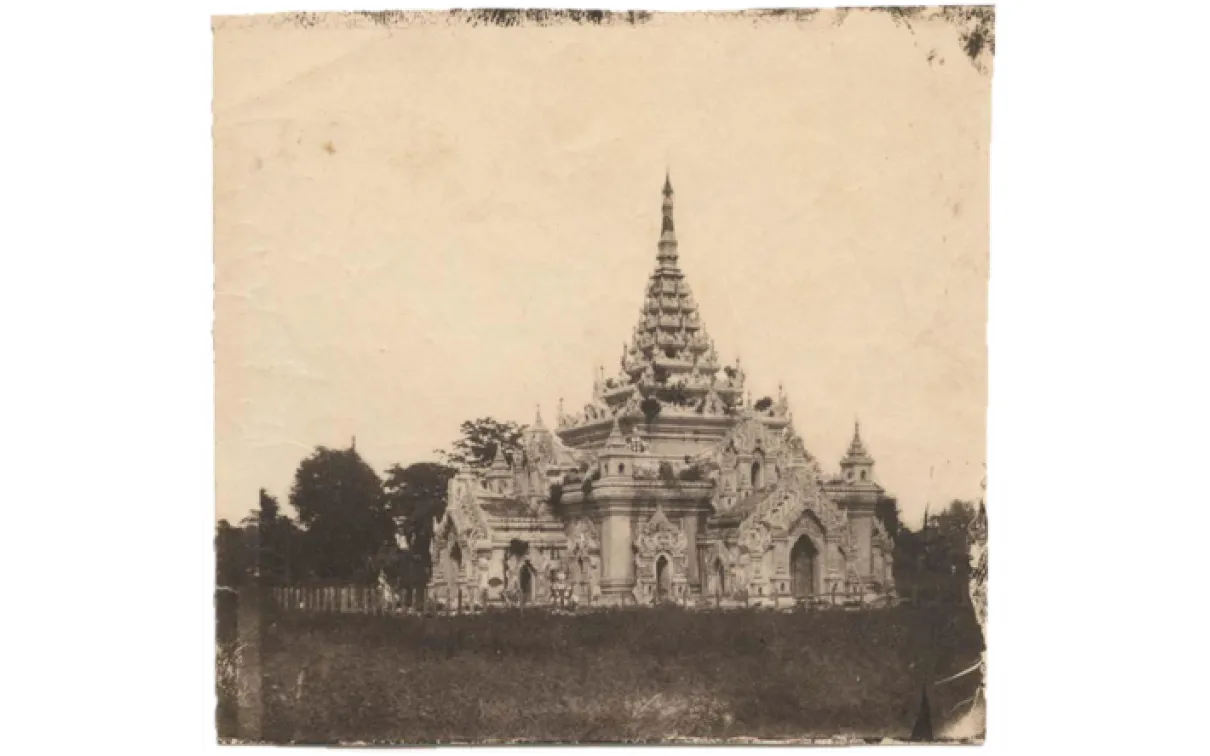Glimpses of Upper Burma: Clement Williams (1833-1879)
Published
Categories
Blog Post
In 2014-2016, ROM received a collection of rare photographs, documents and artifacts once belonging to Clement Williams, one of the first Europeans to live in the Kingdom of Ava (Kingdom of Burma). This region was referred to as Upper Burma by the British, who had annexed Lower Burma after the Second Anglo-Burmese War of 1852. Upper Burma remained independent, ruled by King Mindon Min followed by his son King Thibaw Min, until the British took control of the region after the Third Anglo-Burmese War of 1885. The collection provides a rare glimpse into Upper Burma before colonization, through some of the earliest photographs of Upper Burma and its court ever made; documents reflecting the secular business dealings of the court; and artifacts associated with the Buddhist religion. The collection also includes a rare example of hand-writing attributed to King Mindon Min. Together, these objects allow us to consider how the intersection of politics, trade, and photography provided fertile ground for the production of knowledge about religion and language in an emerging Burmese Studies. The full collection can be viewed online HERE.
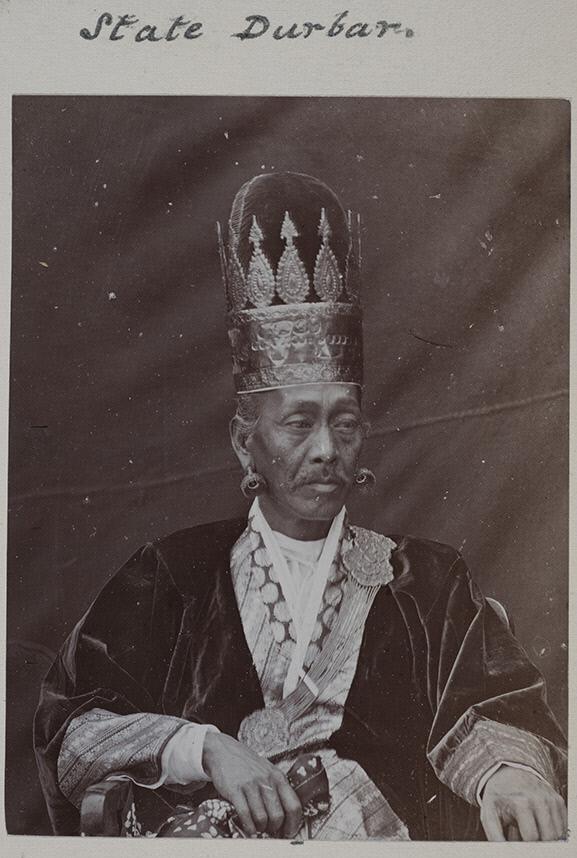
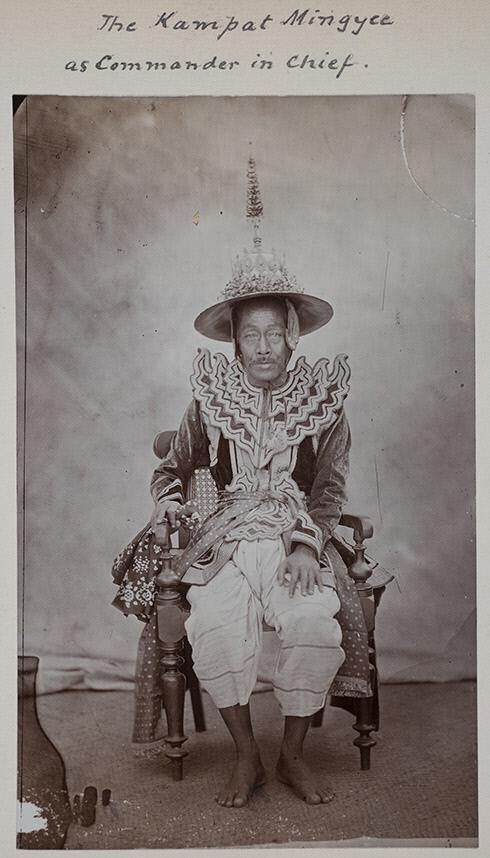
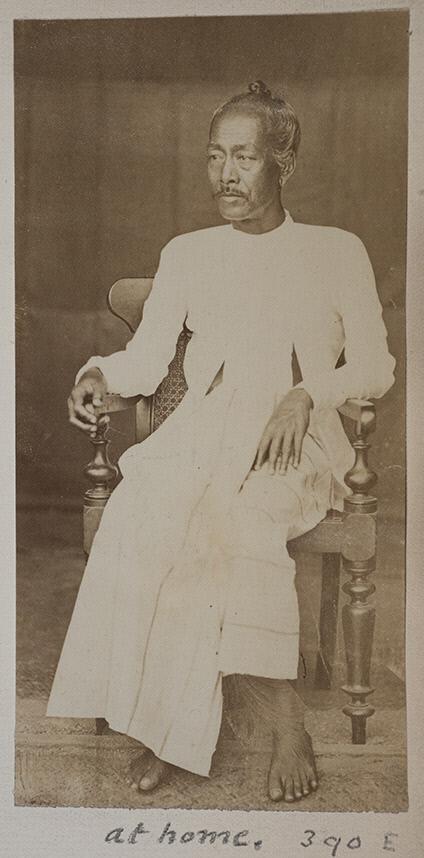
Portraits of Kampat Mingyee, a high level minister at the Court of Ava, Clement Williams, Mandalay, Myanmar (Burma), 1861-1863 (left and middle printed 1885-1901), albumen print (right) or collodion or gelatin silver printing out paper (left and middle), (left to right) 10.1x7.7cm, 18.7x11.4cm, 13.3x6.5cm, ROM 2016.66.8.26, 2016.66.8.25, and 2016.66.8.28 Gift of David Strachey.
Dr. Clement Williams (December 28, 1833 - June 26,1879) was born in Williton, Somerset, UK, the son of a shopkeeper. He joined the 68th Light Infantry as an assistant surgeon and was sent to Burma in 1858. After mastering the Burmese language, he was posted to Mandalay, Upper Burma, by 1861, where he gained the friendship and trust of King Mindon by treating various members of the royal court for cataracts and other medical issues. Because of his extraordinary access to the King, Dr. Williams was appointed “correspondent” to the Chief Commissioner of Lower Burma, Arthur Phayre, and in 1863 he was elevated to the position of Political Agent. As such, he was involved in the negotiation of the commercial treaty in 1863 and played an active role in the economic and political development of Upper Burma. Early in 1863, Dr. Williams secured permission from the King to be allowed to journey up the Irrawaddy River from Mandalay to Bhamo in search of a trade route from India to China. Though he was unable to reach the Chinese border owing to tribal unrest, his published account of his travels, Through Burma to Western China, 1868, fuelled London’s interest in the idea and led to a series of later expeditions. In February 1865, owing to military regulations restricting the employment of medical officers, Dr. Williams was forced to give up the post of Political Agent. He quit the army and worked for a short time as the local agent for the newly established Irrawaddy Flotilla Company. He then entered into business with his brother Howard in Rangoon as middlemen between British industry and the court at Mandalay. When King Mindon died in September 1878, Dr, Williams attended the funeral, and he quickly proved useful as a go-between between the British government and the young new king, Thibaw. He died unexpectedly in June 1879 at the age of forty-five in a villa near Florence, having caught typhoid fever when passing through Naples on the way from Burma to England.
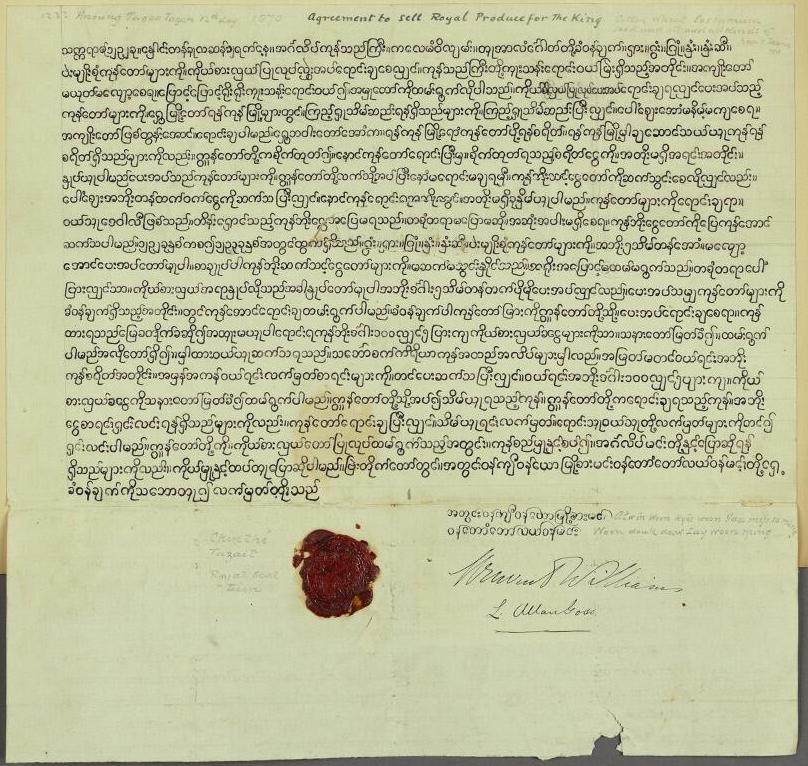
Agreement to sell royal produce for the king, signed by Clement Williams and Louis Allan Goss, Myanmar (Burma), 1870, ink on paper with wax seal, 31 x 32.6 cm, ROM 2016.66.8.1 Gift of David Strachey
Clement Williams learned photography soon after its invention, probably as a hobby as was the case with other early amateur photographers. His photography was likely encouraged during his time in the military and facilitated by his familiarity with chemicals as a medical doctor. As a result, he created one of the earliest photographic records of the palace buildings and court officials in Mandalay, as well as views on and around the Irrawaddy River. Some of these photographs were published as etchings in his 1868 book and used later as glass slides for teaching at Cambridge University by his nephew and business partner L. Allan Goss (1846-1933) and others. A large collection of glass negatives, lantern slides, and albumen prints, (many of which were misattributed to Goss, but can be now definitively attributed to Dr. Williams) are at the Cambridge Museum of Archaeology and Anthropology. A number of rare Burmese maps on cloth (probably collected Clement Williams) were donated by Allan Goss to the Cambridge University Library, the Museum of Archaeology and Anthropology (MAA) in Cambridge, and the British Library. A collection of artifacts, including rare photographs and original documents, were donated in recent years to the Royal Ontario Museum, Toronto, by descendants in Canada.

